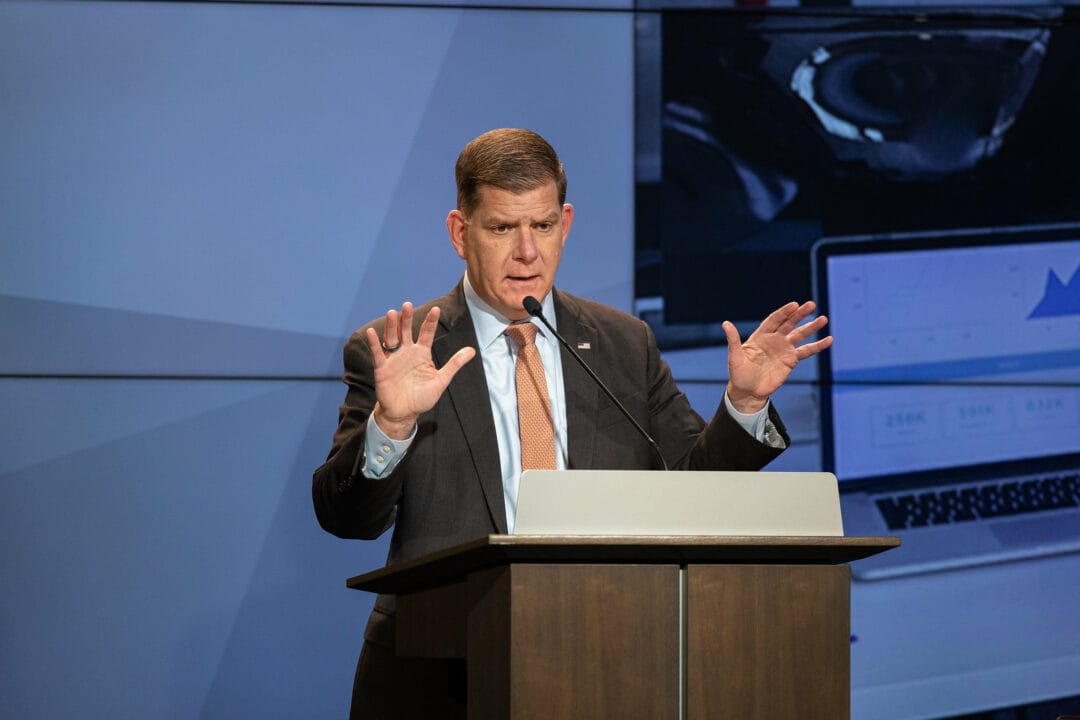NTIA Offers No Extension on Broadband Map Challenges, TikTok’s Transparency, FCC Workforce Report
Friday’s cutoff applied to availability challenges, but it was already too late for location challenges.
Em McPhie

January 17, 2023 — As several state broadband officials announced that they had met the Friday deadline to challenge the Federal Communication Commission’s national broadband map, the National Telecommunications and Information Administration clarified that the existing version of the broadband serviceable location database is the one that will be used for allocating funds from the Broadband Equity, Access and Deployment Act.
“We have heard concerns from some states and other stakeholders, and we have received requests to delay the timeline to give states more time to participate in the FCC’s processes for challenging and improving the National Broadband Map,” the NTIA said a Friday blog post. “Several other states have expressed to us that they want us to maintain this target so that they can begin developing quality plans and begin their subgrant programs as soon as possible.
“Unfortunately, a delay in the timeline would mean a delay in providing funding to communities who desperately need it, and it will not address many of the process concerns we have heard….Every day we delay is another day that communities are not connected. We feel the urgency to getting this funding out the door so it can be put to work for everyone in America.”
This means that availability challenges that were filed before Jan. 13 will be reflected in the BEAD allocation map. Location, or fabric challenges, needed to be submitted much earlier – on October 30, 2022, in fact. However, this was never formally communicated by the NTIA.
The FCC is continuing to accept challenges on a rolling basis, but Friday’s deadline was set based on the maximum amount of time for a challenge to be resolved.
“However, we expect that many challenges filed after today can be resolved in far less time than the maximum allowed under the FCC’s rules, so we have encouraged (and continue to encourage) states to continue to submit challenges to the FCC,” NTIA Public Affairs Director Charles Meisch told Telecompetitor, referring to availability challenges.
Many state broadband offices previously said that they lacked the necessary resources to complete the challenge process by the deadline.
The NTIA highlighted the importance of continuing to press toward its June 30 deadline for allocating BEAD funding, citing “the urgency of this moment to connect the unconnected.”
GovTech cited the reactions of Georgia, Texas and Nebraska. Fierce Telecom highlighted the activities of Kentucky, Virginia, Nevada and New Mexico in a Monday update to its original Friday article.
TikTok turns to third parties to boost transparency and trust
TikTok is entering into discussions with lawmakers and civil society organizations regarding a $1.5 billion plan to reorganize its U.S. operations, with a focus on transparency, the Wall Street Journal reported.
Part of the plan involves utilizing third-party monitors to review the code responsible for selecting which videos to serve to users, as well as which videos to delete.
The company’s planned reorganization is a last-ditch attempt to quell growing distrust from U.S. legislators, many of whom claim that the app poses a threat to national security. Congress recently banned TikTok from federal government devices, and several state governments have followed suit.
A TikTok spokesperson told the Wall Street Journal that the new proposal address concerns about the security of user data.
“We are not waiting for an agreement to be in place,” she said. “We’ve made substantial progress on implementing that solution over the past year and look forward to completing that work to put these concerns to rest.”
FCC task force issues recommendations for strengthening broadband workforce
The Telecommunications Workforce Interagency Group on Friday issued a report urging Congress to take substantial action to prepare the future broadband deployment workforce.
The report details recommendations in seven key focus areas, such as strengthening and better understanding recruitment processes, improving coordination between federal programs and increasing the safety of telecommunications workers.
For several months, industry experts have been raising concerns about the probability of an acute broadband workforce shortage in the near future. The report echoes this concern, emphasizing the need for a highly skilled workforce that can build, operate, maintain and upgrade advanced telecommunications infrastructure.
The interagency working group was established in January 2022 by Jessica Rosenworcel, chairwoman of the FCC, in partnership with Marty Walsh, U.S. Secretary of Labor.
“The Bipartisan Infrastructure Law not only invested in broadband connectivity around the country, but it ensured that we focus on the workforce dedicated to creating those connections,” Rosenworcel said. “We need to be forward-looking with an eye on the workforce needs of the future, including the diverse high-tech workforce needed to promote continued development and innovation in broadband networks, network virtualization, system integration, software development and more.”









Member discussion